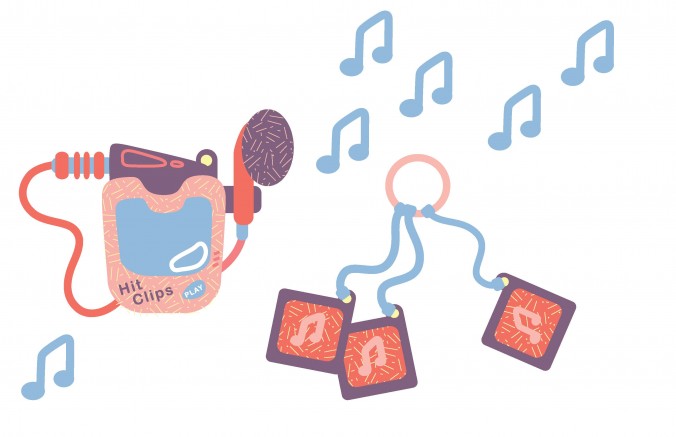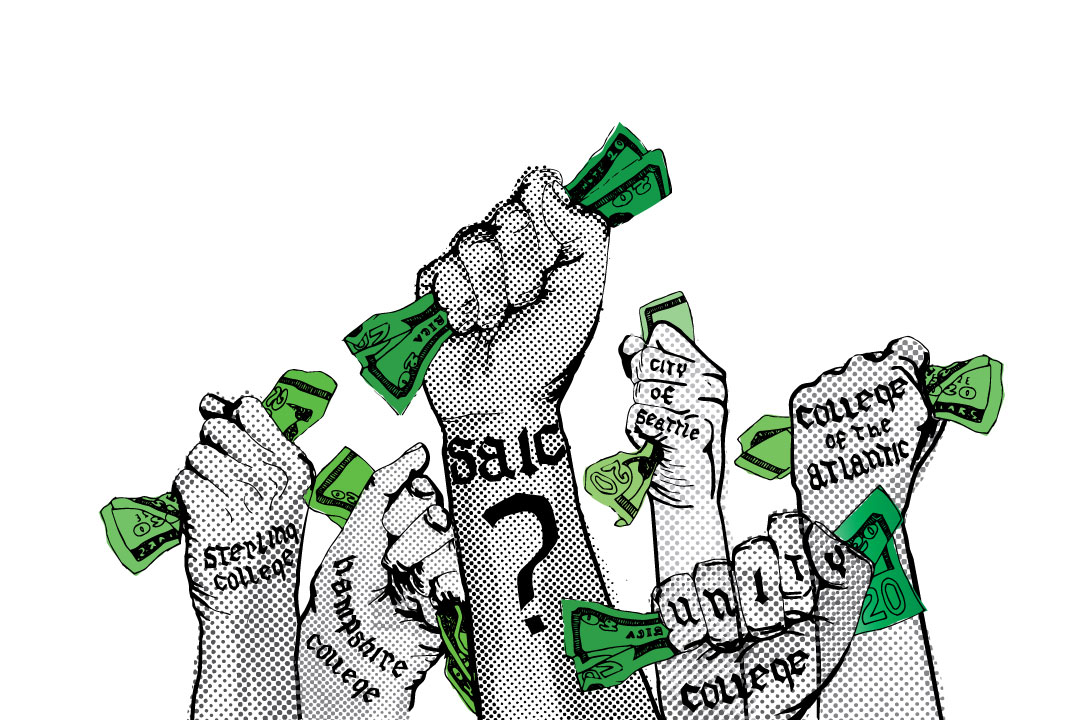
On February 13, 2013, the New Museum in New York City opened the exhibition “NYC 1993: Experimental Jet Set, Trash and No Star.” “The exhibition,” Newmuseum.org states, “is conceived as a time capsule, an experiment in collective memory that attempts to capture a specific moment at the intersection of art, pop culture, and politics.” Borrowing its title from a Sonic Youth album of the same name, the show is a prime example of the 1990s revival in which music is playing a central role.
Music has always been a hotbed for nostalgia. Sonically replicating a particular moment in history with instrumentation and technique is one way to transport a listener; dressing in time-stamped clothing and decorating your album sleeves toward a past trend is another. Revivals aren’t a new phenomenon, and neither is nostalgia. Popular revivals have included the garage rock revival of the early 2000s with bands like the Vines, the Hives and the White Stripes, the lo-fi 1980s aesthetic revival of “chillwave” with groups like Washed Out and Neon Indian at the end of the 2000s and the 1930s-1940s swing revival of the 1990s with the Royal Crown Revue and Squirrel Nut Zippers. Some of the current festishization of the 1990s is attributable to the fact that the kids raised on its material are now in their twenties. But, also of importance may be a nostalgia for the ways certain material was encountered at that time — memories of the primitive Internet, buying CDs, TV on television and a newly outdated model of alternative celebrity.
In “Hip: The History,” author John Leland states that “nostalgia is comforting because it revisits a past in which we know we did not die. We are invulnerable within its amber; in our pasts we are immortal.” By not taking progressive risks, the best that revival bands can hope for is a stylish vegetative state, a deferment of time and artistic progress. Like any past era viewed through rose-colored glasses, the ‘90s are a goldmine for inspiration and theft. However, territory explored by ‘90s alternative rock groups is being re-imagined by new bands with diminishing returns. Bands like Cloud Nothings, Yuck and DIIV exist as redundant, referential hyperlinks that will hopefully only redirect listeners back to Sunny Day Real Estate, Pavement and My Bloody Valentine. MBV’s 2013 album “m b v” proves that they’re still the masters of the genre they invented in 1988, and that even in their absent decades (their last release was in 1991), imitators haven’t moved the shoegaze genre forward. Cycling through decade-referencing trends, there is an increasingly apparent tendency in contemporary indie-rock to forego originality, to instead go for carefully cultivated imitation.
In hip-hop, hyped new artists like Compton, California’s Kendrick Lamar are praised for bringing back classic West Coast hip hop, characterized by the melodic G-funk synths and laid back delivery on Dr. Dre’s “The Chronic” (1992) and other gangsta rap Death Row Records releases. Lamar cites being present at Tupac and Dr. Dre’s video shoot for “California Love” (1995), as an influential moment in his life, and his own 2012 album “good kid, m.A.A.d city,” a critical and popular favorite of the year, was produced by Dr. Dre. Last year at Coachella, promoters went to the extremes of mining the ‘90s — resurrecting Tupac Shakur, who was murdered in 1996, in the form of a “hologram” (2-D video projection) to perform alongside Snoop Dogg and Dr. Dre.
The 1990s in music marked the beginning of the end for many long-standing musical institutions such as major record labels, television appearances, radio hits, magazine covers and CD sales. Alternative music, championed by the new and then-hip MTV, became mainstream culture with bands like Nirvana and Smashing Pumpkins, who were given exposure by dominant institutions of the type which their original scenes worked outside of or in direct opposition to. By 2013, the Internet has obliterated any common denominator in alternative music by opening the doors to an infinite number of casual, one-off bedroom recordings and exposure for any musician with an Internet connection. Record label deals are no longer necessary means of distribution or appeal. With this change, local scenes and DIY movements have to work harder to resist homogenization (if that’s the goal), but it also means infinite possibility for any aspiring musician, and an unfathomable amount of noise to sift through for listeners seeking out new artists.
2013 Festival lineups this year are evidence of the death of the “alternative rock star” model, as the crutch of ‘90s nostalgia is implemented here too. Coachella this year will host Blur, a ‘90s Brit-pop band (Brit-pop itself referencing the 1960s as a reaction against Grunge), Stone Roses, major players in the “Madchester” movement of the early ‘90s (a reaction against shoegaze), and Red Hot Chili Peppers, a reliable festival headliner band whose greatest hits album covers 1991 through 2002. The Pitchfork Music Festival, typically closer to the cutting-edge, booked R. Kelly (see “Born Into the 90s” (1992)), Björk, whose greatest hits album was released in 2002, and Belle & Sebastian, whose Wikipedia “Critical Acclaim” section covers 1998 through 2000. Bonnaroo, which is also hosting Björk and R. Kelly, will also feature the Wu Tang Clan.
Though it’s difficult to know if the the sheer number of musical acts was actually less in the 1990s, by virtue of the modes of distribution, people were, in all likelihood, less aware of as much music as they are today, and had less access to today’s variety. At the risk of oversimplifying the past — a major signifier and problematic trait of nostalgia — it can truly be said that the improvements and progress in Internet culture have made the last ten years more culturally diverse and complex as more information is available to more people. That’s a fact of progress. Major labels, radio hits, physical music stores and MTV all served to create a culture of stardom that exists less and less today as those modes become anachronistic, especially in the “alternative” sphere. At a time when our attention is exponentially fractured and continually divided, icons from the recent, yet vastly different past — Björk, R. Kelly, Dr. Dre and the 1990s by extension — serve as a fondly remembered common
denominator.








[…] Music Festival: Solange, Savages, Phosphorescent — Union Park 7/21 Pitchfork Music Festival: R. Kelly, Glass Candy — Union Park 7/26 Teenage Bottlerocket — Beat Kitchen 7/28 Roky Erickson — […]